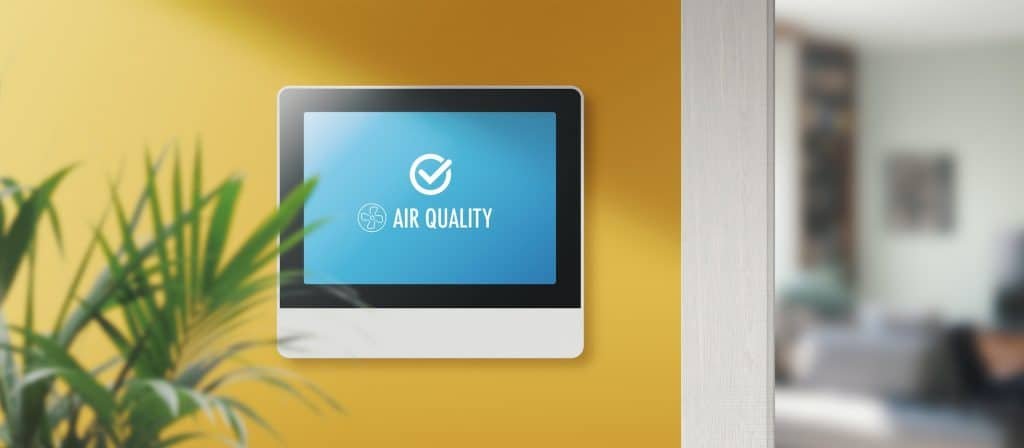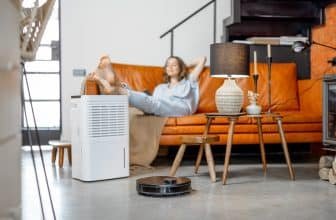Best Air Purifier Room Size Calculator for Optimal Air Quality
Finding the right air purifier for your space can be daunting, but evaluating an air purifier’s specifications for optimal performance is crucial. With our Air Purifier Room Size Calculator, you can easily identify the perfect solution for your needs. This powerful tool takes the guesswork out of air purifier selection, ensuring you achieve optimal air quality with minimal effort.
Ready to Breathe Cleaner Air with the Air Purifier Room Size Calculator?
Room Size and Performance Calculator for Air Purifiers
Key Features of the Air Purifier Room Size Calculator
1. Accurate Room Size Calculation
The calculator determines your room’s exact area in square feet and volume in cubic feet. Simply input the length, width, and height of the room, and let the calculator do the rest. Whether you’re measuring a small bedroom or a spacious living area, the tool provides precise dimensions that are critical for selecting the right size air purifier.
2. Performance Needs Based on ACH (Air Changes per Hour)
Minimum Performance for 2 ACH: Ideal for basic air quality maintenance and everyday use in standard environments.
Optimal Performance for 5 ACH: Perfect for individuals with allergies, asthma, or heightened sensitivity to airborne pollutants, ensuring a cleaner, healthier breathing environment.
3. Filter Replacement Intervals
Stay on top of maintenance by determining the optimal filter change frequency based on daily usage patterns. Regular filter replacements ensure your air purifier functions efficiently, keeping the air in your home consistently clean and free from allergens and other particles.
4. Energy Usage and Cost Estimation
Get a detailed breakdown of estimated monthly energy costs. Input your electricity rate (in $/kWh) and daily usage hours to see how much you’ll spend. Understanding the energy consumption of your air purifier allows you to plan and budget effectively without sacrificing air quality.
5. Room-Specific Recommendations
From bedrooms to kitchens, offices, and even nurseries, this tool provides tailored suggestions for air purifiers suited to your room type and various room sizes. Whether it’s combating odors in a kitchen or reducing pet dander in a living room, the recommendations ensure maximum efficiency.

6. Placement Tips for Maximum Efficiency
Discover the best locations to place your air purifier for effective airflow and air quality improvement. Proper placement enhances the purifier’s efficiency, ensuring even air distribution and optimal filtration throughout the room.
7. User-Friendly Results Display
View your results in a clear, structured format, making it easy to compare and decide. The intuitive design ensures that even first-time users can navigate the tool effortlessly and make informed decisions.
8. Versatile Applications
The calculator caters to a variety of spaces and needs, including:
Living rooms
Offices
Kids’ bedrooms
Kitchens
Home gyms
Small apartments
Why Choose Our Air Purifier Room Size Calculator?
The tool is designed to help you achieve cleaner air effortlessly. By combining essential factors like ACH, square footage, and energy costs, it simplifies the decision-making process and ensures you find a highly effective solution tailored to your space. Additionally, it highlights the importance of Clean Air Delivery Rate (CADR), guiding users to purifiers that meet their specific needs for pollen, smoke, or dust removal.
How It Works
Measure Your Space: Enter your room’s dimensions (length, width, height).
Select Desired Air Changes (ACH): Choose your preferred air exchange rate (2-5 ACH).
Review Recommendations: Instantly receive a comprehensive report including performance needs, filter replacement schedules, and energy cost projections.
Implement Suggestions: Use placement tips and room-specific recommendations to maximize the efficiency of your air purifier.
Common Questions Answered
How big should an air purifier be for a room?
How do you measure a room for an air purifier?
What happens if an air purifier is too big for a room?
How do I calculate air purifier capacity?
What is the role of CADR in air purifier selection?
Additional Benefits of Using the Calculator
Educational Insights: Learn about key metrics like ACH and CADR to better understand air purifier performance.
Cost-Effective Planning: Ensure you’re investing in the right unit without overspending on unnecessary features.
Sustainability: Optimize energy usage for a greener, more eco-friendly approach to air purification.
Boost Your Air Quality Today
Don’t compromise on air quality. Try our Air Purifier Room Size Calculator now and find the perfect purifier to suit your needs. Whether you’re targeting pet dander, dust, or airborne particles, this tool will guide you to the right solution.

Understanding Air Purifiers and Room Size
Air purifiers come in various sizes, making it challenging to determine the most suitable one for your needs. It’s essential to match the purifier’s capacity with your room’s requirements to ensure effective air cleaning without unnecessary energy consumption.
Room size is a crucial factor in choosing the right air purifier for optimal air quality. A mismatch in size could lead to inadequate purification or excessive energy use, impacting both air quality and utility costs.
A larger room requires a more powerful air purifier to clean the air effectively. This ensures that the air purifier can handle the increased volume of air and the potential for more airborne particles in larger spaces.
Consider the room’s dimensions, including length, width, and ceiling height, to determine the ideal air purifier size. These measurements help calculate the room’s volume, which is critical in selecting a purifier with the appropriate Clean Air Delivery Rate (CADR).
Measuring Room Size for Air Purifier Calculation
To calculate the square footage of a room, measure the length and width in feet or meters. Multiply these two dimensions to determine the total square footage, which is essential for selecting the right air purifier.
The ceiling height plays a crucial role in determining the volume of air that needs purification. A higher ceiling means more air volume, requiring a more powerful air purifier to effectively clean the space.
Accurate measurements are vital for ensuring the air purifier matches the room’s needs. Using a laser measure or tape measure will help you obtain precise dimensions, facilitating an optimal air purifier selection.

Clean Air Delivery Rate (CADR): What You Need to Know
The Clean Air Delivery Rate (CADR) measures an air purifier’s ability to eliminate pollutants from the air, ensuring a healthier environment. This metric is crucial for understanding how effectively an air purifier can handle different types of airborne particles like dust, smoke, and pollen. A higher CADR rating signifies a more efficient purifier, capable of delivering cleaner air in a shorter period.
CADR is quantified in cubic feet per minute (CFM), a standard recognized by the Association of Home Appliance Manufacturers (AHAM). This measurement indicates the volume of clean air produced by the purifier every minute, providing a clear benchmark for comparing different models. By adhering to AHAM standards, consumers can trust the reliability and performance claims of the air purifiers they choose.
A higher CADR rating directly correlates with improved air quality and more effective cleaning capabilities. This means that purifiers with elevated CADR numbers can handle larger spaces or more polluted environments, ensuring comprehensive air purification. As a result, users can enjoy a significant reduction in allergens, smoke, and other pollutants, leading to a healthier living space.
Look for AHAM Verified CADR ratings to ensure that your air purifier has been independently tested and certified for performance. These ratings provide assurance that the purifier meets industry standards and can effectively clean the air of specific pollutants. By choosing AHAM Verified products, consumers can make informed decisions and invest in air purifiers that deliver on their promises.
Calculating How Much Air Your Purifier Needs to Clean
Calculate the volume of the room in cubic feet or cubic meters to determine the air purifier’s coverage area. By measuring the length, width, and height of the room, you can find the total volume of air that needs purification. Additionally, using a CFM calculator to determine the proper airflow required for heating or cooling a room within an HVAC system can ensure comfortable temperatures. This calculation is crucial for selecting an air purifier that can handle the specific size of your space effectively.

Multiply the volume by 3 to get the CADR needed to clean the room effectively. This step helps you estimate the Clean Air Delivery Rate (CADR) required to ensure that the air purifier can efficiently circulate and purify the air in your room. By understanding this calculation, you can choose a purifier that meets your air quality needs.
Consider the type and amount of airborne particles in the air, such as pet dander, dust, and pollen. Different rooms may have varying levels of pollutants based on their use and environment, which affects the purifier’s required capabilities. Identifying these particles helps in selecting an air purifier with the right CADR for optimal performance.
Use the CADR calculator to determine the required CADR for your room size. A CADR calculator simplifies the process by providing a quick way to assess the necessary CADR based on your room’s dimensions and pollution levels. This tool ensures that you choose an air purifier that can effectively clean the air in your specific environment.
Air Changes Per Hour (ACH) and Air Purifier Performance
Air Changes per Hour (ACH) is a crucial metric that indicates how often the air in a room is completely replaced within one hour while the air purifier is running. This measurement helps assess the efficiency of an air purifier in maintaining clean air, especially in environments with high pollution levels or limited ventilation. Choosing an air purifier with a higher ACH ensures that the air is refreshed more frequently, enhancing overall air quality.
ACH becomes particularly important in spaces with elevated pollution levels or restricted airflow, as it directly impacts the purifier’s effectiveness. In such settings, a higher ACH rating means the air purifier can better manage and reduce airborne particles, providing a healthier environment. By focusing on ACH, users can select air purifiers that are better suited for challenging air quality conditions.

To achieve optimal air quality and performance, it’s essential to look for air purifiers with a high ACH rating. A higher ACH signifies the purifier’s ability to circulate and clean the air more efficiently, resulting in improved indoor air quality. This feature is especially beneficial for individuals with allergies or respiratory issues, as it ensures a consistent supply of fresh air.
Consider the air purifier’s ability to maintain air quality both under normal conditions and during periods of increased pollution. An air purifier with a robust performance across varying conditions can adapt to changes in air quality, providing reliable purification. This adaptability is crucial for spaces prone to fluctuations in pollution levels, ensuring continuous protection and comfort.
Choosing the Right Air Purifier for Your Room
Researching air purifiers and their specifications is crucial to finding the right one for your room size and air quality needs. By understanding the features and capabilities of different models, you can select a purifier that effectively cleans the air and fits your specific requirements.

When choosing an air purifier, consider the room size, air quality, and CADR required. These factors ensure that the purifier can handle the volume of air and the type of pollutants present, providing optimal performance.
Look for air purifiers with a CADR that matches the size of your room and the type of airborne particles present. This ensures the purifier can efficiently remove pollutants such as dust, smoke, and pollen, maintaining a healthy indoor environment.
Check the coverage area specified by the manufacturer to ensure the air purifier can handle your room size. This information helps you avoid purchasing an underpowered unit that may struggle to clean the air effectively in larger spaces.
Maintaining Your Air Purifier for Optimal Performance
Regular maintenance is essential to keep the air purifier functioning efficiently. Ensuring that your air purifier receives routine care helps maintain its performance and longevity. By adhering to a consistent maintenance schedule, you can prevent potential issues and ensure your device operates at its best.
Change the filter periodically to capture more airborne particles. Replacing the filter at recommended intervals is crucial for effective air purification, as it ensures the removal of dust, pet dander, and other pollutants. This practice not only maintains air quality but also extends the life of the air purifier.

Clean the air purifier’s exterior and interior regularly to prevent dust buildup. Regular cleaning of both the outside and inside of the air purifier prevents the accumulation of dust, which can hinder its performance. This simple task keeps the unit running smoothly and contributes to a healthier indoor environment.
Check the air purifier’s performance regularly to ensure it is working effectively. Monitoring the device’s performance helps identify when maintenance or adjustments are needed, ensuring optimal air purification. Regular checks allow you to address any issues promptly, maintaining a clean and healthy atmosphere.
Frequently Asked Questions About Air Purifiers
What is the Right Air Purifier Size for My Room?
Determining the right air purifier size for your room is crucial for effective air cleaning. To ensure optimal performance, match the purifier’s capacity with your room’s square footage and volume.
How Do I Calculate the CADR Needed for My Room?
Calculating the CADR needed for your room involves understanding the room’s dimensions and air quality requirements. By multiplying the room’s volume by the desired air changes per hour, you can determine the necessary CADR for efficient air purification.
What is the Difference Between CADR and ACH?
CADR and ACH are both important metrics for assessing air purifier performance, but they serve different purposes. While CADR measures the volume of clean air produced per minute, ACH indicates how often the air in a room is replaced within an hour.
How Often Should I Change the Air Purifier’s Filter?
Changing your air purifier’s filter regularly is essential for maintaining its efficiency and air quality. Follow the manufacturer’s guidelines, typically every 3-6 months, to ensure the filter can capture more airborne particles effectively.
Can I Use a Portable Air Cleaner in a Large Room?
Using a portable air cleaner in a large room may not provide adequate air purification. It’s important to check the unit’s coverage area and ensure it matches the room size for effective performance.
Top Air Purifier Features to Consider
CADR Rating and Coverage Area
The CADR rating and coverage area are critical features to consider when selecting an air purifier. A higher CADR rating ensures the air purifier can efficiently remove pollutants from the air, while an adequate coverage area guarantees it can handle the size of your room effectively.
Filter Type and Quality
The type and quality of filters used in an air purifier determine its ability to capture airborne particles. High-quality filters, such as HEPA filters, are essential for removing allergens and pollutants, ensuring cleaner air in your living space.
Noise Level and Silent Operation
Noise level and silent operation are important for maintaining a peaceful environment, especially in bedrooms or offices. An air purifier that operates quietly allows you to enjoy clean air without disruptive noise, making it suitable for any time of day.
Additional Features, Such as Built-in Humidistats and Thermometers
Additional features like built-in humidistats and thermometers enhance the functionality of an air purifier. These features provide real-time data on humidity and temperature, helping you maintain optimal indoor air conditions.
Energy Efficiency and Cost-Effectiveness
Energy efficiency and cost-effectiveness are vital considerations for long-term use of an air purifier. An energy-efficient model reduces electricity costs, while maintaining high performance, ensuring you get the best value for your investment.
Pet Dander and Allergen Removal Capabilities
Pet dander and allergen removal capabilities are crucial for households with pets or allergy sufferers. An air purifier with strong allergen removal capabilities helps reduce symptoms and improve overall air quality, creating a healthier home environment.
Smart Sensors and Automatic Mode
Smart sensors and automatic mode enhance the convenience and efficacy of an air purifier. These features allow the device to adjust its settings automatically based on air quality, ensuring optimal performance without manual intervention.





